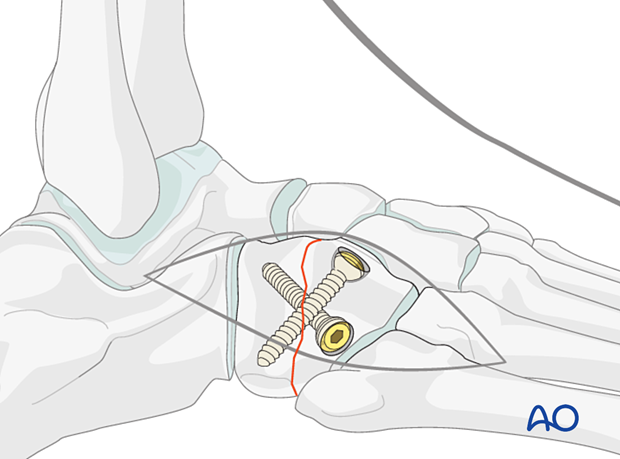Lag screw fixation of simple cuboid fracture
1. General considerations
The goal of the treatment
The goal of the treatment is bone healing with appropriate intra- and extraarticular reduction to maintain lateral column length.
Anatomic function
The calcaneocuboid joint and the talonavicular joints are responsible for complex hindfoot circumduction.
Lateral column length is critical to maintaining the shape and function of the foot. Therefore, the cuboid length must be maintained.

2. Reduction and temporary fixation
Debridement
Irrigate and debride the fracture site using a syringe or a curette.

Reduction
Reduce the fracture using small pointed reduction forceps.

Temporary fixation
Insert two K-wires to secure the reduction.
If cannulated screws are used, the guide wires can be used for provisional fixation.
If solid screws are to be used, be sure to place the K-wires so that they will not interfere with the subsequent screw placement.

3. Fixation
Screw trajectories
Given the cuboid’s shape, the choice of screw trajectory is limited, and it may not be possible to insert the lag screw perpendicular to the fracture plane.
These fractures can be fixed with crossing screws, usually from distal to proximal.

Fixation
Following the standard technique, insert two screws into the planned screw trajectory.
They may be non-cannulated, cannulated, or headless compression screws.
In contrast to lag screws inserted in the diaphysis, these lag screws will typically not penetrate the far cortex, as this would damage the opposite articular surface. Screw holes should be countersunk to prevent prominent hardware and interference with applying a neutralization plate.
Do not fully tighten the lag screws.














